Creative Activities for Teaching Resume Writing
Van thompson.

Endlessly editing your students' resumes may help them land a job or two, but it doesn't teach them any lifelong skills. Instead, you should be teaching your students how to write their own resumes in a way that is compelling and effective. Classroom activities can help your students cultivate the skills they need.

Explore this article
- Choosing Resume Words
- Identifying Resume Don'ts
- Writing Someone Else's Resume
- Group Resume Critiques
1 Choosing Resume Words
A 2013 LinkedIn survey found that words such as "strategic" and "innovative" are highly overused. These words don't convey much about an applicant's skills. The University of Michigan encourages students to use action words that convey achievements rather than just listing their duties. Encourage students to brainstorm two lists. One list should include action verbs and specific adjectives that present a candidate's compelling and relevant skill sets. The other should be a list of words that are empty and overused.
2 Identifying Resume Don'ts
The University of California at Berkeley emphasizes the importance of avoiding common mistakes such as lying about job titles or leaving out dates. Ask students to devise a list of resume don'ts, then to create a list of ways these various mistakes cause readers to perceive resume writers. For example, a man who has a resume written in the Comic Sans font might be perceived as being computer illiterate or having bad judgment about presentation.
3 Writing Someone Else's Resume
Writing your own resume is particularly challenging because it requires an honest and exhaustive self-assessment. Scholatic suggests asking students to begin by writing someone else's resume, such as a celebrity or cartoon character. Encourage students to focus on the positive and minimize the negative, to discuss possible interview questions and topics, and to evaluate any weaknesses in the pretend candidate's application. Doing so can help them do the same thing with their own resumes.
4 Group Resume Critiques
It's often easier to accept criticism when you're also dishing it out. Ask students to develop resume rough drafts, then schedule a group resume critique. Each member of the group must listen to other's input, then provide input. Johnson County Community College advises students to offer first impressions about whether the resume looks professional, to evaluate whether the resume is tailored to a specific job's requirements, to check for grammar and syntax errors, and to ensure a resume highlights specific accomplishments.
- 1 Forbes: Want an Unbeatable Resume? Read These Tips From a Top Recruiter
- 2 Scholastic: Resume Writing
- 3 Scholastic: Applications and Interviews
- 4 Education World: Writing a Good Resume -- Student Critique and Practice Exercise
- 5 Time: The 10 Absolute Worst Buzzwords to Put on a Resume
About the Author
Van Thompson is an attorney and writer. A former martial arts instructor, he holds bachelor's degrees in music and computer science from Westchester University, and a juris doctor from Georgia State University. He is the recipient of numerous writing awards, including a 2009 CALI Legal Writing Award.
Related Articles

How to Make Bagging Groceries Sound Good on a Resume

How to Write a Professional Letter of Recommendation...

How to Create an Actor's Portfolio

How to Address an Email to Someone You Don't Know

The Differences Between a Letter of Intent and a Personal...

Middle School Proofreading and Editing Activities

Importance of Strong Writing Skills

How to Write an Essay Bragging About Yourself

How Would I Go About Writing an Essay on Character?

How to Sign a Letter of Resignation

The General Reasons Why Grammar Is Important for Daily...

How to Sell Yourself in an Essay

How to Write a Recommendation Letter for a Supervisor

How to Write a Letter of Recommendation For Yourself

The Values, Ethics, Beliefs & Characteristics of Leaders

How to Join the LAPD SWAT

How to Write a Career Autobiography

How to Address a Professional Letter

How to Choose References for a College Application

How to Format Biography Letters
Regardless of how old we are, we never stop learning. Classroom is the educational resource for people of all ages. Whether you’re studying times tables or applying to college, Classroom has the answers.
- Accessibility
- Terms of Use
- Privacy Policy
- Copyright Policy
- Manage Preferences
© 2020 Leaf Group Ltd. / Leaf Group Media, All Rights Reserved. Based on the Word Net lexical database for the English Language. See disclaimer .

10 Helpful Resume Writing Activities For High School Students
“The challenge of life, I have found, is to build a resume that doesn’t simply tell a story about what you want to be, but it’s a story about who you want to be” . – Oprah Winfrey
As beautifully defined by the above quote, a resume is a story of the stepping stones that you’ve taken so far in order to become who you want to be. Having a compelling resume is a must for every individual to thrive in the competitive landscape, be it a high school student or a working professional.
Resume writing is a crucial skill that high school students need to develop as this is the time they prepare for their higher education and enter the corporate world. It is not only about enlisting skills and achievements, but it requires thoughtful organizational skills, an ability to present qualifications and a good hold of language skills.
To quip high school students about the process of resume writing, summarized below are some creative activities aiming to guide them in creating impactful resumes and setting a strong foundation for their careers.
Discover, collaborate & reflect: Engaging resume writing activities for high schoolers
1. resume redesign .

With the availability of a number of templates for resumes, it becomes quite difficult to select the suitable and relevant one on the basis of the unique information to include, especially for high schoolers who are bound to get overwhelmed being their first time for jobs as well as college applications.
How to do the activity:
- Firstly, educators need to familiarize students with every important element that has to be there in a resume for high school students and the optional ones that are not necessary but can be included as per the need and availability.
- Now, students need to make a note of their information, and based on that, they have to explore and experiment with different designs for their resumes.
- Instruct them that they can try different fonts and layouts and design at least 5 resumes for themselves.
- Fix one day when every student has to come prepared with their designed resumes and every participant will present their designs to the class and the class will rate every design out of 5
Here, feedback and rating play a crucial role in helping students select the most appropriate one for themselves. Also, when they explore and experiment with different designs, they familiarize themselves with different layouts and structures which might be helpful in any other cases of resume designing.
2. Discover yourself

Let’s use an effective strategy of SWOT Analysis which is used for marketing to discover ourselves. Yes, you read that right! SWOT stands for Strengths, Weaknesses, Opportunities, and Threats. In order to build an efficient resume, one must know about themself in terms of what they are good at and what areas need to be worked upon.
How to do the activity:
- Explain to the class about the strategy and its elements.
- Now ask them to take a sheet of paper and divide it into 4 sections. Name each section with Strengths, weaknesses, opportunities, and threats.
- Set a timer of about 5-10 minutes for each section and ask students to think about themselves and fill in each section.
Strengths will help them know what they’re good at that can also be referred to as positive points about themselves. The weaknesses section will include the negative points or what they can not do or are not good at which will help them know and narrow down the options to what they can do in the future.
The opportunities section will include the areas they think they can ace if they work on it which will help them know the areas of improvement. Last, but not least will be threats in which they need to write about any external threats that you can not control but can be reduced by controlling other factors (can be external or internal) causing it.
3. Improvise your Resume

Every job profile is different and that calls for different requirements such as unique skill sets, achievements, and qualifications.
- Explain to students how customizing the resume for every job or college application they’re applying to is important and not the same single resume works for every application.
- Ask students to search and explore different job openings on job portals or company official websites.
- Shortlist 3 job openings that they think are suitable for them and go through the details of what is the profile, what are requirements, and what will be the daily responsibilities.
- Now they’ve to work on their resume and customize it for all the 3 profiles they shortlisted.
- Once done, check their resume and provide feedback.
One thing that students need to know here is that customizing a resume based on different applications doesn’t mean we’ve to lie and make it exactly what is the requirement, instead, it means presenting your skills and qualifications, experience in such a way that it resonates with the application requirements. This activity can also be done for college applications.
4. Resume Peer Review

Feedback is significant for everything we do. Be it education or resume writing.
- Start giving numbers 1 to 10 to every student, or can be according to the number of students in a class but make sure only 2 students can have the same number.
- Now, the students with the same number will form a pair.
- Ask students to exchange their resumes with their pair and they need to check and evaluate each other’s resumes based on what they know about their pair and also set certain criteria for the evaluation.
- After they are done evaluating, they need to share the insights they find about the resume. Share what they think is missing in the resume, what areas can be improved and what are the good and the positive points about the resume. Teachers can check with every pair and share their insights too.
This activity will help to get the different perspectives that you might be missing or are not aware of. Additionally, it will help with observation skills as well as help students revisit the resume-building crucial points.
5. Hire for your company

This activity will give students an opportunity to act as HR of different companies and evaluate different resumes.
- Gather some samples of resumes for different job profiles. Make sure there are enough samples that every student in a class receives 2 samples at least to compare and evaluate.
- Now give a situation to the students such as “Suppose you’re an HR manager of XYZ company hiring for customer support profile. You’ve got certain resumes and you need to check and evaluate them and see if you want to shortlist them for an interview or not. If yes, then why, and if not, then why not. Observe carefully and provide a proper explanation for the same”
- Now give 2 resume samples to each student and let them scan them and come to a conclusion.
- Call each student one by one to present their findings to the class to which classmates and the educator can give feedback and share insights on the observation skills of the student.
This will let students think from the recruiter’s point of view and they will get clarity about their resume about how to write and present their skills and qualifications.
6. Practice cover letters

Cover letters are what answer “why you should be hired for this role” and in case of college applications, it will be the statement of purpose. Cover letters need to be very straightforward that require good writing skills. For this, high school students can employ creative writing activities to learn and practice the same.
- Students have to create a 1-2 minute elevator pitch for themselves keeping in mind their resume and the job profile they’re applying for.
- Instruct students that they need to include examples of why they think they’re good at every skill they’ve mentioned.
- Instruct the students that in this 1-2 minute pitch, you’ve to convince the HR (here students) how you can be an asset to the company.
- Ask the class to share their insights about what points are good and what can be better.
This activity will help you write an effective cover letter and make a good first impression.
7. Powerful Words Resume Challenge

Word choice is critical when it comes to resumes. It is always said that action words are powerful to describe what you have done to highlight your experience and persuade potential employers and college administrators.
- Prepare handouts for all the students of the class with all the powerful action words that can be used in a resume and explain how the use of these words can make an impact and make the resume stand out.
- Discuss every word, the meaning of it, and an example of how it can be used in a resume and under what situations.
- Now ask students to use the handout and try to incorporate as many words as they can in their resume and then give feedback to each and every student.
This can also be an improving communication skill activity that will familiarize them with using these words in their daily conversation.
8. Resume Do’s and Don’ts

This activity is to equip high school students about what to strictly avoid while writing resumes and what to follow to make the resumes more impactful and stand out.
- Make different slips with resume do’s and don’ts and put them in a bowl or small box in the classroom.
- On the whiteboard or chalkboard, mark a line in the center and make two sections and name one part as “Do’s” and the other as “Don’ts”.
- Call each student one by one and ask them to pick one chit and determine whether the point he/she discovered will come under do’s or don’ts.
- Ask them to explain why they think the same and what should be done in that case.
This activity will familiarize them with the technicalities that need to be taken care of while writing a resume and clear doubts about the whole process and exceptions. You can conduct this activity for both colleges as well as job applications.
9. Anonymous messages

Who doesn’t like getting anonymous compliments and knowing about themselves? Well, this activity is all about getting insights about ourselves from other’s points of view.
- Ask every student in the class to write about a minimum of five of their classmates on a slip of ½ size of a4 sheet. They can write for more friends if they want but the minimum is five.
- They need to write the name of the friend they’re writing about then followed by strengths that they think their friend is good at which can be an asset to land a good job. Then write about the areas where they need to work on that can be added advantage for them while applying for jobs.
- These chits will be anonymous feedback for the students.
- Once done, collect all chits, mix them, and put them in a bowl.
- Pick one chit one by one and read aloud about the student.
This will encourage them, increase their self-esteem, provide insights that the students are unaware of about themselves, and can use them in their resumes and work on themselves. This self-esteem activity for high school students can work wonders in encouraging students to have belief & faith in themselves and their unique capabilities.
10. Build a Resume from Scratch

Let’s solve a puzzle and build a resume from scratch without having relatable skills, qualifications, and experiences to include. Sounds interesting, right?
- Have different bowls or small boxes for every component of the resume like skills, qualifications, experience, the position of responsibility, etc.
- Now, you can ask students or make different slips for every box by yourself. Each slip should have one thing like one slip with graphic designing for the box of skills. Make sure to have enough slips for every box so that every student can get at least 3-4 slips from each box.
- Now every student has to come and pick 2-3 slips from each box.
- After everyone is having their own set of slips, they need to design a resume based on the information they’ve got on the slips. They need to think of what qualifications, and skills can go together and how and create a good compelling resume.
This activity is to equip students to carefully design and present everything in a resume when things are not so good and relatable enough. This activity will also help them in tailoring the resume according to a given job profile or college application.
High school students are at a point of transition to the colleges and workforce. This calls for developing resume writing skills to build compelling resumes. Besides instructing them about the process, engaging them in activities can have a profound impact on their learning.
Activities do not only teach them about the technicalities of resume building but also involve them in critical thinking, self-reflection, and collaboration. In addition to this, high school students can also participate in college readiness activities and transition activities to prepare themselves for their future endeavors.

Having a 10+ years of experience in teaching little budding learners, I am now working as a soft skills and IELTS trainers. Having spent my share of time with high schoolers, I understand their fears about the future. At the same time, my experience has helped me foster plenty of strategies that can make their 4 years of high school blissful. Furthermore, I have worked intensely on helping these young adults bloom into successful adults by training them for their dream colleges. Through my blogs, I intend to help parents, educators and students in making these years joyful and prosperous.
Leave a Comment Cancel reply
Save my name, email, and website in this browser for the next time I comment.
Resumes and Cover Letters for High School Students
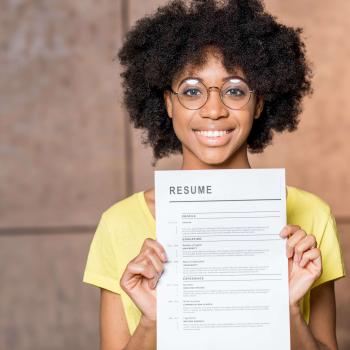
- Resources & Preparation
- Instructional Plan
- Related Resources
Today's high school students must market their experiences, skills, achievements, and accolades to set them apart from others when applying to college or for a job. This lesson takes students through the steps of creating an effective resume and cover letter using ReadWriteThink's Resume Generator and Letter Generator.
Featured Resources
- Resume Generator : This ReadWriteThink resource takes students through the process of creating a resume one step at a time.
- Letter Generator : This ReadWriteThink resource helps students create a professional cover letter.
- Sample High School Resumes and Cover Letters : These realistic resumes and cover letters help students visualize and generate content for their own documents.
From Theory to Practice
Common core standards.
This resource has been aligned to the Common Core State Standards for states in which they have been adopted. If a state does not appear in the drop-down, CCSS alignments are forthcoming.
State Standards
This lesson has been aligned to standards in the following states. If a state does not appear in the drop-down, standard alignments are not currently available for that state.
Materials and Technology
- LCD Projector
- Computers with Internet access
- The 3 Fs of Resume Writing
- My Resume Ideas: Getting Started
- Steps to Creating a Cover Letter
- Sample High School Resumes and Cover Letters
- Resume / Cover Letter Rubric
- Visualizing Your Resume: Graphic Organizer
- Visualizing Your Cover Letter: Graphic Organizer
Preparation
- Prepare copies of the Sample High School Resumes and Cover Letters printout so that students may review it.
- Reserve space in a classroom that has access to the Internet, specifically ReadWriteThink’s Resume Generator and Letter Generator .
- Prepare copies of the following printouts: The 3 Fs of Resume Writing , My Resume Ideas: Getting Started , Steps to Creating a Cover Letter , Sample High School Resumes and Cover Letters, Visualizing Your Resume: Graphic Organizer , and Visualizing Your Cover Letter: Graphic Organizer .
Student Objectives
Students will
- Understand the function, form, and effectiveness of a resume by examining and discussing sample resumes with their classmates
- Demonstrate the importance of rhetorical situations by selling themselves to a defined audience
- Develop a working resume by using the Resume Generator
- Recognize how a cover letter works in conjunction with a resume by drafting them for a similar purpose
- Write a cover letter by using the Letter Generator
Lesson 1: What is a Resume?
- Introduce students to resumes as a genre of writing: professional writing. Discuss how this is different from academic genres in that it serves a different purpose and is intended for a different audience. In short, it is a type of writing by an author who is trying to get something. As a result, it is an extremely persuasive style of writing. Share examples of when a person would need a resume, such as applying for a job, a scholarship, or an award, or when creating a portfolio of one’s work.
- Prepare students to understand the purpose of a resume, including its F unction, F orm, and (e) F fectiveness (the 3 Fs). Take an informal poll of the class, asking who has heard of a resume before this class, who has seen one, and who has one of their own. Based on the results, you may ask students to share their experiences to add to the conversation.
- Function: The function of a resume is to inform the audience about you in order to accomplish something. What you’re trying to accomplish depends on what you’re trying to do. This might include getting a job, getting into college, winning a scholarship, or being selected for an internship. There are many reasons to show people your resume.
- Form: Resumes need to look a certain way. This is considered their form. People who read resumes expect them to include specific information, such as your name, address, contact information, education, past jobs, volunteer experience, and special skills. If a resume does not look like a traditional resume, the reader may be confused and think the writer is not educated about writing proper resumes.
- (e)Ffectiveness: For a resume to be effective, it must demonstrate your knowledge of both function and form. An effective resume - Has a clear purpose that shows why you are writing it - Is visually appropriate and appealing, or easy to read - Includes all the necessary information about the writer - Is grammatically correct with no errors in punctuation or spelling
- Share copies of the resume printout. You might begin discussing these by putting students into small groups first to review. Tell them to identify what they see as the 3 Fs: Function, Form, and (e)Ffectiveness.
- Return together as a class, and discuss each F and how students determined what it was.
Lesson 2: Developing Content for Your Resume
- Review the The 3 Fs of Resume Writing from the previous lesson.
- Discuss the two types of resume: chronological and functional. Ask students which style they think is best for them.
- Show the sample resumes from the previous lesson. Ask students to identify which one is chronological and which one is functional.
- Share online resume reference sites such as College Admissions High School Resume and High School Students Need a Resume Too with the class to present additional ways of thinking about the construction of resumes. (If you are not in a computer lab or a room with Internet access, tell students to view these sites later on their own.)
- Have students brainstorm content for their resumes using the printout My Resume Ideas: Getting Started as a guide.
- Begin completing the parts of the printout. Move around the room answering questions as students work.
- Ask students to complete the printout on their own before the next lesson.
Lesson 3: Defining Audience and Purpose
- Have students take out their completed My Resume Ideas: Getting Started printout. Put them into small groups to share their work with others.
- What was easy about filling this out? What was difficult?
- What sections contained the most and least information? Why?
- The audience refers to anyone who will review the resume, so we must consider all audiences, both primary and secondary.
- The purpose refers to why the audience is looking at the resume and what they will be looking for, so we must ask ourselves what they want to read.
Lesson 4: Using Resume Builder
- Take students to a computer lab with access to the Internet and Resume Generator to complete this lesson. Have them log into the Resume Builder site. As they do so, remind them about the time limit for creating their draft in class. They should structure their time accordingly.
- Using their notes from the My Resume Ideas: Getting Started printout, ask students to go through the process of entering their information. Show students the features of the tool, from the additional information about resumes on the first page to the audio feature accompanying the site that enables them to hear the information aloud.
- When they have completed their resumes, have students save them and also print a copy to bring to the next class.
Lesson 5: Peer Review
- Ask students to take out the printed copies of their resumes. Discuss how resumes today can be printed and submitted to the audience, as they have prepared, but they can also be submitted electronically. In that case, the resume writer needs to understand how to save a resume as a .pdf or how to create a resume with very little formatting, with only the basic information listed and no fancy spacing or bullets used. Connect this to their use of Resume Generator , and discuss how this would be similar to or different from what they just did.
- Put students into small groups to peer review their resumes. Encourage students to review their peers’ resumes for the 3Fs: Function, Form, and (e)Ffectiveness.
Lesson 6: What is a Cover Letter?
- What did you like about using Resume Builder to create your resume?
- What did you find particularly easy or difficult about the process?
- What do you like or dislike about your completed resume? d. What would you like to change about it?
- Function: Cover letters accompany resumes to introduce the reader of the resume to the writer. They personalize the resume, allowing the writer to provide more detail about him- or herself and any relevant experience. Many people think of cover letters as a way for the writer’s true voice to come through.
- Form: Like resumes, cover letters also have a typical form: that of a business letter. The writer has to know the correct placement of the heading, date, salutation, body paragraphs, closing, and signature. Readers expect a cover letter to have certain features. If they aren’t included, the reader may think the writer is not knowledgeable and, therefore, not ready for whatever he or she is trying to accomplish by submitting the cover letter and resume.
- Has a clear purpose that shows why you are writing it
- Is visually appropriate and appealing, or easy to read
- Includes additional relevant information about the writer
- Is grammatically correct with no errors in punctuation or spelling
- Share an online reference about cover letters, such as Sample Cover Letter for High School Students , to support the present discussion, and raise or discuss any questions as a result of it. (If you are not in a computer lab or a room with Internet access, tell students to view this site later on their own.)
- Show the sample cover letters written by high school students in the Sample High School Resumes and Cover Letters printout. Discuss these with the students in relation to the 3 Fs: What is the function of the cover letter (its purpose), what is unique about its form (design), and how effective do students think this cover letter will be?
Lesson 7: Developing Your Cover Letter
- Explain to students that they are going to create a rough outline of a cover letter that could accompany their resume. Provide the Visualizing Your Cover Letter: Graphic Organizer printout to fill out. They may do this individually or in small groups. Move around the room responding to students’ work and offering suggestions.
- Once students have a good start on this, provide the more detailed Steps to Creating a Cover Letter printout. Students should use this to create a draft of their cover letters, due at the next class. Remind students that their time in the lab during the next session will be limited, so they need to have a full draft completed.
Lesson 8: Finishing Your Cover Letter
- Once again, have students meet in the computer lab to type their cover letters using the Steps to Creating a Cover Letter printout and Letter Generator . You may want to remind them about their time constraints and the need to organize their time.
- Using Letter Generator, have students transform their drafts into finished cover letters.
- Make sure students save their work and also print a copy.
- At the end of class, ask students to submit their resumes and cover letters to you for a grade. Use the Resume / Cover Letter Rubric to assist you in assigning a grade.
- Have students submit first and second drafts of the resume and cover letter to you for comments or an early grade, additional revision, and a new/final grade.
- Do more detailed work with cover letters, including researching jobs and researching examples of cover letters for specific jobs. Then have students write cover letters tailored to these jobs.
- Include a discussion of writing essays and personal statements for college applications.
- Connect discussions of resume and cover letter writing to students’ college aspirations, including their ideas for majors, careers, courses, and activities to become involved in. You may consider reviewing online resources, including ACT .
Student Assessment / Reflections
- Review students’ printouts for The 3 Fs of Resume Writing, My Resume Ideas: Getting Started, Visualizing Your Resume: Graphic Organizer, Visualizing Your Cover Letter: Graphic Organizer, and Steps to Creating a Cover Letter after each lesson in which they are used or collected. Make sure students are correctly identifying the parts and including information as needed. If a pattern of errors or misunderstandings occurs, review them with students at the beginning of the next lesson.
- Collect typed drafts of students’ resumes and cover letters as created using the Resume Generator and Letter Generator. Review and grade them using the Resume/Cover Letter Rubric. Address the grade and comments when returning the resumes and cover letters to students, especially if students are allowed to revise for a new grade.
Add new comment
- Print this resource
Explore Resources by Grade
- Kindergarten K
- TEA Website
- Contact TEA
- Sign Up For Updates

Lesson Plan: Resume Writing for Teens
Description.
In this lesson, students will develop a resume, write business correspondence, complete a sample job application, and explain the protocol for selecting and using appropriate references for job applications.
Download the lesson plan
Scroll to the related items section at the bottom of this page for additional resources.
An Approach to Teaching Resume Writing
October 26, 2017
by Michael Finney
I prefer to teach students how to create a resume that targets a specific position at a specific organization, so that when compared to the generic resume of other candidates, the targeted resume will stand out as superior and thus improve the student’s chances of getting an interview (the ultimate goal of the resume in my view).
Students in my Technical and Business Writing class start off by finding a current job posting from a job search engine that reflects their career goals. For example, if a student is pursuing a music production degree at ACC, I might suggest finding a current job posting for an audio engineer. And for those situations in which students don’t meet the minimum requirements listed in the job posting, I suggest finding a relevant internship, which typically has fewer requirements but still puts students in the field of their choice. The point is to get students to pursue jobs they really want so they will be motivated to do their best with the assignment.
I approach the resume as a two-phase assignment: (1) researching and gathering content, and (2) revising and formatting content.
The first phase gets students gathering information about the organization where they want to work, including mission statement and values, descriptions of products and services, and historical background. (This generates lots of information that could be used during an interview. Interviewers tend to be impressed by candidates who are well informed about the organization.) Then students focus on identifying key terms from the job requirements and matching those key terms to their own experience and education. This allows students to create a resume that includes the key terms from the job posting along with whatever experience and education they have that addresses those key terms. For example, if “Experience with Java” is a key phrase from the job posting, the student could list a Java class completed at ACC on the resume.
In phase 2 students focus on refining and organizing their content for maximum readability. To achieve this, I teach them how to develop parallel structure, descriptive headings, bulleted lists, effective white space, and other techniques. I also have students review several sample resumes to get ideas for layout and organization of content. Students learn to select their best content from phase 1; that is, the content that reflects their best qualifications relevant to the employer’s requirements. When I grade the resumes, I mark them up using Track Changes in Word so the students can easily comprehend my suggestions and corrections. Then I give them class time to incorporate my suggestions and raise their grade. During this workshop time in class I circulate through the classroom checking in on students as they incorporate final changes. I’ve had several students tell me they landed interviews and jobs using the resume they developed in my class.
Response to "An Approach to Teaching Resume Writing"
Resume service - december 12, 2017.
Awesome post! I read your blog constantly and most of the time you are coming out with some outstanding stuff. I usually like to share this with my friends and my followers as I really loved it! Keep up the good work : )
Latest posts

10 Questions to ask schools in an interview for an international teaching position

Becoming comfortable with the discomfort of sharing your strengths

Empathy Week: developing empathy in teaching
- About Teacher Horizons
- Culture and community
- Forums, events, meetups
- Health and wellbeing
- Housing and finance
- Leisure and lifestyle
- Partnerships
- Professional development
Search blog posts
Subscribe to our blog.
Email address

9 silly ways to make your teaching CV more interactive
Your cv is a great place to showcase your skills. in creative industries there’s a lot of buzz about making your cv ultra-eyecatching by designing it in the form of a webgame, menu, or printing it on a milk carton. so how better to show off your lesson-planning and activity-designing flair than by making your cv a lesson in itself here are a few silly ideas to make your teaching cv more interactive., the maths teacher cv.
Present key figures and dates as complex equations which must be solved and plotted on a chart to find out exactly how much IB experience you have.

The English literature CV
Write about your experience and education in an epic block of rhyming couplets in Shakespearean English. The recruiter must translate the text into modern English in order to understand it.
The listening skills CV
Supply your CV in .mp3 format. Include a worksheet that gives practice of at least 3 question-types such as multiple choice, summary completion, and diagram labelling. Peer check, OCFB.

The kindergarten CV
Supply your CV in large print with friendly illustrations. Include tracing paper and coloured pencils. Use short words.
The kinetic CV
Print out the different parts of your CV on coloured paper, laminate and mail as a pack. Include some red herrings that do not need to be used. Instruct recruiters they have 5 minutes to assemble it in the correct order. Don’t forget to ask for it back afterwards!
The flipped classroom CV

The board game CV
Create a board game for groups of 4 recruiters. 2 teams of 2 recruiters must compete against each other, rolling dice and answering subject-specific questions to earn clues. The first pair to accurately construct your CV is the winner, and can interview you as a prize.
The IELTS CV
Provide only a series of confusing diagrams illustrating your experience and education. Students must write about your skills and experience using the passive voice.
The creative writing CV
Give a few key facts and the recruiter must write a dramatic account of your career to date, inventing details as necessary. Award marks for vocabulary, complex sentences and inventiveness.
Disclaimer: Teacher Horizons accept no responsibility for lack of job offers if you follow these tips. For proper CV advice, read our post on how to write your international school CV or see our related posts about job hunting .

- Grades 6-12
- School Leaders
FREE Poetry Worksheet Bundle! Perfect for National Poetry Month.
10 Tips for High Schoolers Creating Their First Resumes
Even in an uncertain world, high schoolers can build solid resumes.
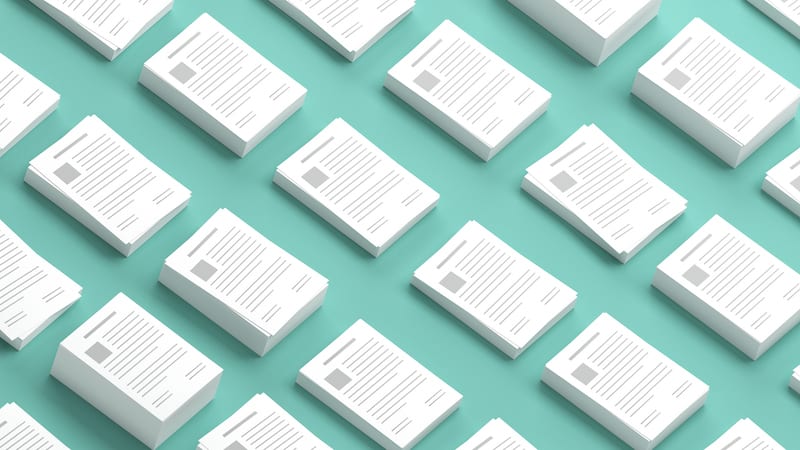
Deloitte offers many resources to help high schoolers get college- and career-ready. Learn more>>
Creating your first resume can be an intimidating task when you’re a teenager. Maybe you’ve never had a job and with the current condition of the world, prospects for summer employment aren’t looking great. [1] Internships, camps, and other resume builders may also be in short supply. That’s why we asked our friends at Deloitte to share some of their high school resume tips to help students prepare for future career and college opportunities.
1. Customize your resume for each job.
You know what they say—you never get a second chance to make a first impression. That’s why, once you create the bones of your resume, you’ll want to customize each version you submit to be the best match for the job you’re applying to.
2. Make your summary pop.
The summary section of your resume is an opportunity to let your personality shine. The summary consists of two or three sentences at the top of your resume that pack in information about who you are and the unique skills you can bring to the job. It’s an employer’s first impression of you. You should consider including dynamic language and strong action verbs.
3. Tailor your experience to the job requirements.
Use your resume to highlight skills that make you stand out. If you’re applying for a customer service job, include experience that shows you know how to take care of people. If you’re hoping to work on a landscaping crew, include experience that shows you know how to work on a team.
4. Include relevant education.
Up to this point, school has been your job, and employers realize that. Highlight the skills and knowledge that you’ve acquired from relevant classes that make you an excellent candidate for the job. For instance, if you’re applying for a job working with kids, mention the early childhood class you took. If you’re applying for a position as a cashier, include the money management or accounting class.
5. Don’t forget about extracurricular activities and community service.
Experience working with people is valuable; it doesn’t matter whether or not you earned money doing it. Employers are interested in knowing what you’re passionate about and want to see that you’ve made a commitment to showing up and participating.
6. Highlight achievements and awards.
It’s okay to brag on yourself in this section of your resume. Your achievements can help you stand out from the crowd. Include all leadership positions you’ve held and the contributions you’ve made that have produced impressive results.
7. Keep your resume brief.
Most hiring managers do not have the time to pore through long descriptive paragraphs. Remember, you want to catch an employer’s eye quickly, so be concise. Your best bet is to structure your resume in a bullet-point format, one that draws the eye to the most important information. Think of each section as a teaser that the employer can’t wait to hear more about in an interview.
8. Keep it simple.
Of course, you want your resume to stand out from the crowd, but now is not the time for fancy fonts, wild colors, or photo collages. Limit it to one page and make sure it is uncluttered, easy to read, and informative.
9. Keep it professional.
Make sure that your contact email is appropriate and professional. You’re not likely to get many responses to PartyBoy5890 or SheSoLazy888. Your best bet is to go with a straightforward firstname.lastname email format.
10. Proofread!
Your resume is a representation of who you are. It should be spotless. Ask at least one other person to proofread your resume. Check and double-check for spelling, grammar, and consistency of verb tenses, font, and font size, as well as a balanced layout.
High schoolers can get more resume tips and advice for building their careers from Deloitte.
[1] SOURCE: Washington Post
You Might Also Like

How to Start a Student-Run School Store
For sale: pencils, T-shirts, and important life skills. Continue Reading
Copyright © 2023. All rights reserved. 5335 Gate Parkway, Jacksonville, FL 32256

10 fun writing activities for the reluctant writer
10 FUN WRITING ACTIVITIES FOR THE RELUCTANT WRITER
No doubt about it – writing isn’t easy. It is no wonder that many of our students could be described as ‘reluctant writers’ at best. It has been estimated by the National Association of Educational Progress that only about 27% of 8th and 12th Grade students can write proficiently.
As educators, we know that regular practice would go a long way to helping our students correct this underachievement, and sometimes, writing prompts just aren’t enough to light the fire.
But how do we get students, who have long since been turned off writing, to put pen to paper and log in the requisite time to develop their writing chops?
The answer is to make writing fun! In this article, we will look at some creative writing activities where we can inject a little enjoyment into the writing game.

COMPLETE DIGITAL AND PRINT FUN WRITING UNIT
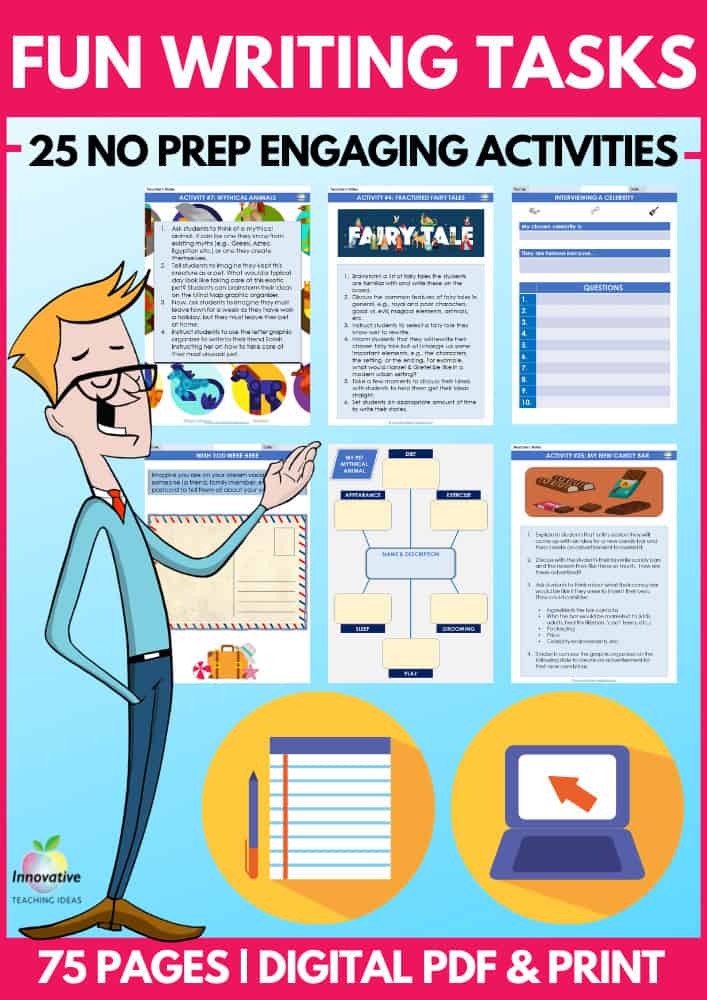
25 FUN and ENGAGING writing tasks your students can complete INDEPENDENTLY with NO PREP REQUIRED that they will absolutely love.
Fully EDITABLE and works as with all DIGITAL PLATFORMS such as Google Classroom, or you can PRINT them for traditional writing tasks.
1. Poetry Scavenger Hunt
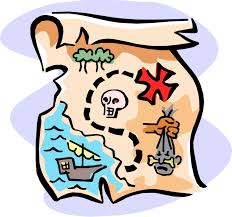
The Purpose: This activity encourages students to see the poetry in the everyday language around them while helpfully reinforcing their understanding of some of the conventions of the genre.
The Process: Encourage students to ‘scavenge’ their school, home, and outside the community for snippets of language they can compile into a piece of poetry or a poetic collage. They may copy down or photograph words, phrases, and sentences from signs, magazines, leaflets or even snippets of conversations they overhear while out and about.
Examples of language they collect may range from the Keep Out sign on private property to the destination on the front of a local bus.
Once students have gathered their language together, they can work to build a poem out of the scraps, usually choosing a central theme to give the piece cohesion. They can even include corresponding artwork to enhance the visual appeal of their work, too, if they wish.
The Prize: If poetry serves one purpose, it is to encourage us to look at the world anew with the fresh eyes of a young child. This activity challenges our students to read new meanings into familiar things and put their own spin on the language they encounter in the world around them, reinforcing the student’s grasp on poetic conventions.
2. Story Chains
The Purpose: Writing is often thought of as a solitary pursuit. For this reason alone, it can be seen as a particularly unattractive activity by many of our more gregarious students. This fun activity exercises students’ understanding of writing structures and engages them in fun, creative collaboration.
The Process: Each student starts with a blank paper and pen. The teacher writes a story prompt on the whiteboard. You’ll find some excellent narrative writing prompts here . For example, each student spends two minutes using the writing prompt to kick-start their writing.
When they have completed this part of the task, they will then pass their piece of paper to the student next to them. Students then continue the story from where the previous student left off for a given number of words, paragraphs, or length of time.
If organized correctly, you can ensure students receive their own initial story back at the end for the writing of the story’s conclusion .
The Prize: This fun writing activity can be used effectively to reinforce student understanding of narrative writing structures, but it can also be fun to try with other writing genres.
Working collaboratively motivates students to engage with the task, as no one wants to be the ‘weak link’ in the finished piece. But, more than that, this activity encourages students to see writing as a communicative and creative task where there needn’t be a ‘right’ answer. This encourages students to be more willing to take creative risks in their work.
3. Acrostic Associations
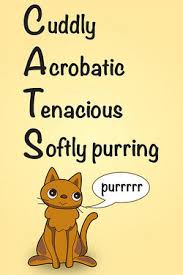
The Purpose: This is another great way to get students to try writing poetry – a genre that many students find the most daunting.
The Process: Acrostics are simple poems whereby each letter of a word or phrase begins a new line in the poem. Younger students can start off with something very simple, like their own name or their favorite pet and write this vertically down the page.
Older students can take a word or phrase related to a topic they have been working on or have a particular interest in and write it down on the page before beginning to write.
The Prize: This activity has much in common with the old psychiatrist’s word association technique. Students should be encouraged to riff on ideas and themes generated by the focus word or phrase. They needn’t worry about rhyme and meter and such here, but the preset letter for each line will give them some structure to their meanderings and require them to impose some discipline on their wordsmithery, albeit in a fun and loose manner.
4. The What If Challenge

The Purpose: This challenge helps encourage students to see the link between posing interesting hypothetical questions and creating an entertaining piece of writing.
The Process: To begin this exercise, have the students come up with a single What If question, which they can then write down on a piece of paper. The more off-the-wall, the better!
For example, ‘What if everyone in the world knew what you were thinking?’ or ‘What if your pet dog could talk?’ Students fold up their questions and drop them into a hat. Each student picks one out of the hat before writing on that question for a suitable set amount of time.
Example What If Questions
- “What if you woke up one day and found out that you had the power to time travel?”
- “What if you were the last person on Earth? How would you spend your time?”
- “What if you were granted three wishes, but each one came with a terrible consequence?”
- “What if you discovered a secret portal to another world? Where would you go, and what would you do?”
- “What if you woke up one day with the ability to communicate with animals? How would your life change?”
The Prize: Students are most likely to face the terror of the dreaded Writer’s Block when they are faced with open-ended creative writing tasks.
This activity encourages the students to see the usefulness of posing hypothetical What If questions, even random off-the-wall ones, for kick-starting their writing motors.
Though students begin by answering the questions set for them by others, please encourage them to see how they can set these questions for themselves the next time they suffer from a stalled writing engine.
5. The Most Disgusting Sandwich in the World

The Purpose: Up until now, we have looked at activities encouraging our students to have fun with genres such as fiction and poetry. These genres being imaginative in nature, more easily lend themselves to being enjoyable than some of the nonfiction genres.
But what about descriptive writing activities? In this activity, we endeavor to bring that same level of enjoyment to instruction writing while also cleverly reinforcing the criteria of this genre.
The Process: Undoubtedly, when teaching instruction writing, you will at some point cover the specific criteria of the genre with your students.
These will include things like the use of a title, numbered or bulleted points, time connectives, imperatives, diagrams with captions etc. You will then want the students to produce their own piece of instruction writing or procedural text to display their understanding of how the genre works.
But, why not try a fun topic such as How to Make the Most Disgusting Sandwich in the World rather than more obvious (and drier!) topics such as How to Tie Your Shoelaces or How to Make a Paper Airplane when choosing a topic for your students to practice their instruction writing chops?
Example of a Most disgusting Sandwich Text
The Prize: As mentioned, with nonfiction genres, in particular, we tend to suggest more banal topics for our students to work on while internalizing the genre’s criteria. Enjoyment and acquiring practical writing skills need not be mutually exclusive.
Our students can just as quickly, if not more easily, absorb and internalize the necessary writing conventions while engaged in writing about whimsical and even nonsensical topics.
if your sandwich is entering the realm of horror, be sure to check our complete guide to writing a scary story here as well.
Daily Quick Writes For All Text Types

Our FUN DAILY QUICK WRITE TASKS will teach your students the fundamentals of CREATIVE WRITING across all text types. Packed with 52 ENGAGING ACTIVITIES
6. Diary Entry of a Future Self

The Purpose: This activity allows students to practice personal writing within the conventions of diary/journal writing. It also challenges them to consider what their world will be like in the future, perhaps stepping a foot into the realm of science fiction.
The Process: Straightforwardly, after working through some examples of diary or journal writing, and reviewing the various criteria of the genre, challenge the students to write an entry at a given milestone in the future.
This may be when they leave school, begin work, go to university, get married, have kids, retire etc. You may even wish to get the students to write an entry for a series of future milestones as part of a more extended project.
Example of Message to Future Me Text
The Prize: Students will get a chance here to exercise their understanding of this type of writing , but more than that, they will also get an opportunity to exercise their imaginative muscles too. They will get to consider what shape their future world will take in this engaging thought experiment that will allow them to improve their writing too.
7. Comic Strip Script
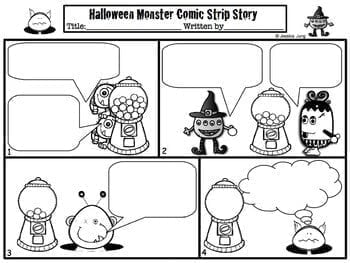
The Purpose: Give your students the chance to improve their dialogue writing skills and to work on their understanding of character development in this fun activity which combines writing with the use of a series of visual elements.
The Process: There are two ways to do this activity. The first requires you to source, or create, a comic strip minus the dialogue the characters are speaking. This may be as straightforward as using whiteout to erase the words in speech bubbles and making copies for your students to complete.
Alternatively, provide the students with photographs/pictures and strips of cards for them to form their own action sequences . When students have their ‘mute’ strips, they can begin to write the dialogue/script to link the panels together.
The Prize: When it comes to writing, comic strips are probably one of the easier sells to reluctant students! This activity also allows students to write for speech. This will stand to them later when they come to produce sections of dialogue in their narrative writing or when producing play or film scripts.
They will also develop their visual literacy skills as they scan the pictures for clues of tone and context before they begin their writing.
Keep It Fun
Just as we should encourage our students to read for fun and wider educational benefits, we should also work to instil similar attitudes towards writing. To do this means we must work to avoid always framing writing in the context of a chore, that bitter pill that must be swallowed for the good of our health.
There is no getting away from the fact that writing can, at times, be laborious. It is time-consuming and, for most of us, difficult at the best of times. There is a certain, inescapable amount of work involved in becoming a competent writer.
That said, as we have seen in the activities above, with a bit of creative thought, we can inject fun into even the most practical of writing activities . All that is required is a dash of imagination and a sprinkling of effort.
8. Character Interviews
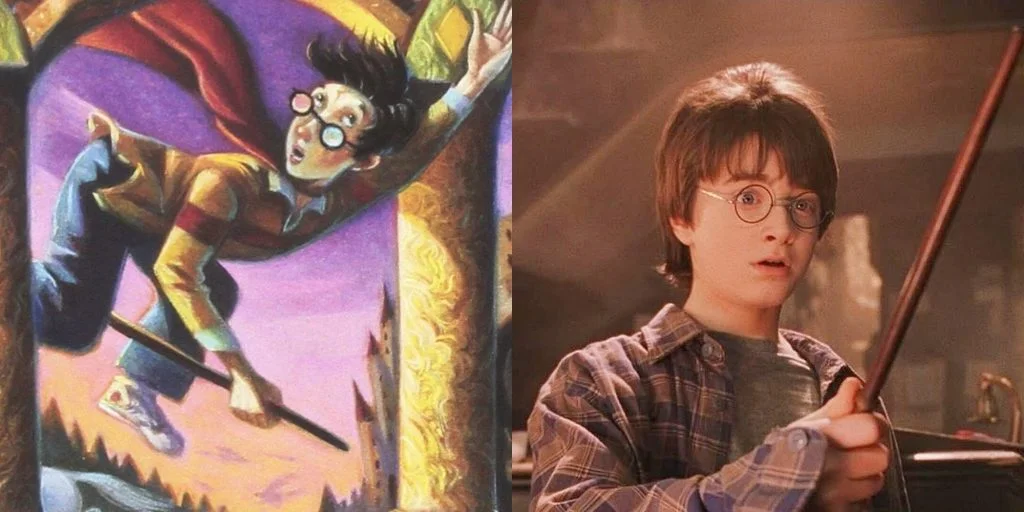
The Purpose: Character interviews as writing activities are excellent for students because they encourage creative thinking, character development, and empathy. The purpose of this activity is to help students delve deeper into the minds of the characters they are creating in their stories or reading about in literature. By conducting interviews with these characters, students gain a better understanding of their personalities, motivations, and perspectives.
The Process of character interviews involves students imagining themselves as interviewers and their characters as interviewees. They can either write out the questions and answers in a script-like format or write a narrative where the character responds to the questions in their own voice.
The Prize: Through character interviews, students learn several valuable skills:
- Character Development: By exploring various aspects of their characters’ lives, backgrounds, and experiences, students can develop more well-rounded and authentic characters in their stories. This helps make their fictional creations more relatable and engaging to readers.
- Empathy and Perspective: Conducting interviews requires students to put themselves in their characters’ shoes, considering their thoughts, emotions, and struggles. This cultivates empathy and a deeper understanding of human behavior, which can be applied to real-life situations as well.
- Voice and Dialogue: In crafting the character’s responses, students practice writing authentic dialogue and giving their characters unique voices. This skill is valuable for creating dynamic and believable interactions between characters in their stories.
- Creative Expression: Character interviews provide a creative outlet for students to let their imaginations run wild. They can explore scenarios that may not appear in the main story and discover new aspects of their characters they might not have considered before.
- Critical Thinking: Formulating questions for the interview requires students to think critically about their characters’ personalities and backgrounds. This exercise enhances their analytical skills and storytelling abilities.
Overall, character interviews are a dynamic and enjoyable way for students to delve deeper into the worlds they create or the literature they read. It nurtures creativity, empathy, and writing skills, empowering students to become more proficient and imaginative writers.
9. The Travel Journal

The Purpose: Travel journal writing tasks are excellent for students as they offer a unique and immersive way to foster creativity, cultural awareness, and descriptive writing skills. The purpose of this activity is to allow students to embark on a fictional or real travel adventure, exploring new places, cultures, and experiences through the eyes of a traveller.
The process of a travel journal writing task involves students assuming the role of a traveler and writing about their journey in a journal format. They can describe the sights, sounds, tastes, and emotions they encounter during their travels. This activity encourages students to use vivid language, sensory details, and expressive writing to bring their travel experiences to life.
The Prize: Through travel journal writing tasks, students will learn several valuable skills:
- Descriptive Writing: By describing their surroundings and experiences in detail, students enhance their descriptive writing skills, creating engaging and vivid narratives.
- Cultural Awareness: Travel journals encourage students to explore different cultures, customs, and traditions. This helps broaden their understanding and appreciation of diversity.
- Empathy and Perspective: Through writing from the perspective of a traveler, students develop empathy and gain insight into the lives of people from different backgrounds.
- Research Skills: For fictional travel journals, students might research specific locations or historical periods to make their narratives more authentic and accurate.
- Reflection and Self-Expression: Travel journals offer a space for students to reflect on their own emotions, thoughts, and personal growth as they encounter new experiences.
- Creativity and Imagination: For fictional travel adventures, students get to unleash their creativity and imagination, envisioning fantastical places and scenarios.
- Language and Vocabulary: Travel journal writing tasks provide opportunities for students to expand their vocabulary and experiment with expressive language.
Overall, travel journal writing tasks inspire students to become more observant, empathetic, and skilled writers. They transport them to new worlds and foster a sense of wonder and curiosity about the world around them. Whether writing about real or imaginary journeys, students develop a deeper connection to the places they encounter, making this activity both educational and enjoyable.
10. The Fairy Tale Remix
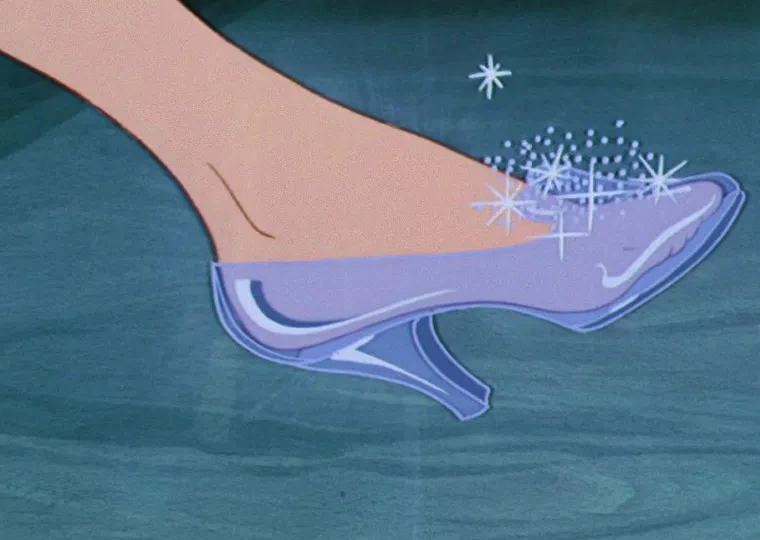
The Purpose: A fairy tale remix writing activity is a fantastic creative exercise for students as it allows them to put a unique spin on classic fairy tales, fostering imagination, critical thinking, and storytelling skills. This activity encourages students to think outside the box, reinterpret well-known tales, and explore their creative potential by transforming traditional narratives into something entirely new and exciting.
The process of a fairy tale remix writing activity involves students selecting a familiar fairy tale and altering key elements such as characters, settings, plot twists, or outcomes. They can modernize the story, change the genre, or even mix different fairy tales together to create a wholly original piece.
The Prize: Through this activity, students will learn several valuable skills:
- Creative Thinking: Students exercise their creativity by brainstorming unique concepts and ideas to remix the fairy tales, encouraging them to think imaginatively.
- Critical Analysis: Analyzing the original fairy tale to identify essential elements to keep and areas to remix helps students develop critical thinking skills and understand storytelling structures.
- Writing Techniques: Crafting a remix requires students to use descriptive language, engaging dialogue, and well-developed characters, helping them hone their writing techniques.
- Perspective and Empathy: Remixing fairy tales allows students to explore different character perspectives, promoting empathy and understanding of diverse points of view.
- Genre Exploration: Remixing fairy tales can introduce students to various genres like science fiction, fantasy, or mystery, expanding their literary horizons.
- Originality: Creating their own narrative twists and unexpected plots encourages students to take ownership of their writing and develop a unique voice.
- Storytelling: Students learn the art of compelling storytelling as they weave together familiar elements with innovative ideas, captivating their readers.
By remixing fairy tales, students embark on a creative journey that empowers them to reimagine well-loved stories while honing their writing skills and imaginative prowess. It’s an engaging and enjoyable way for students to connect with literature, explore new possibilities, and showcase their storytelling talents.
MORE FUN WRITING ACTIVITIES FOR YOU

7 Fun Writing Sub Plans for Substitute Teachers

25 Fun Christmas Writing Tasks for Students
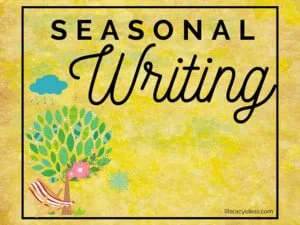
5 Fun Seasonal Writing Activities Students and Teachers Love

10 Fun Classroom Writing Games to Improve Literacy Skills

The Writing Process

7 Evergreen Writing Activities for Elementary Students
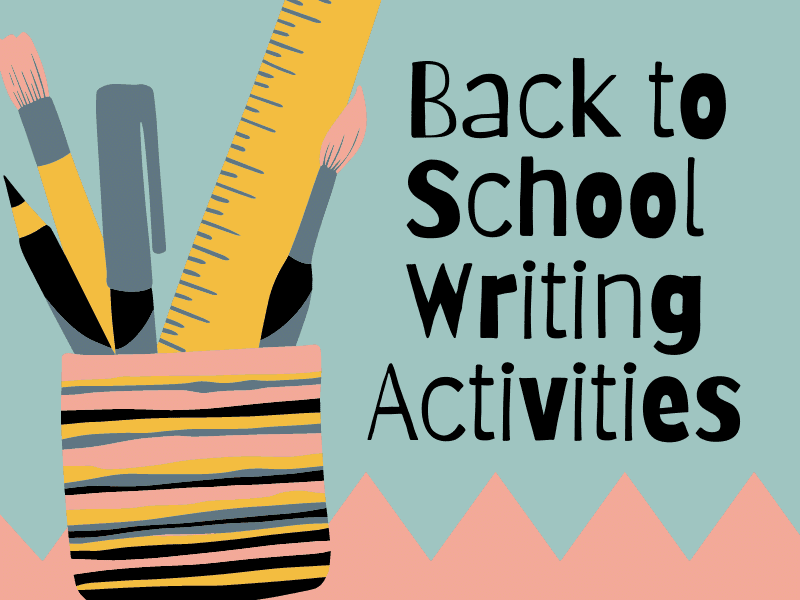
17 Fun First Day Of School Writing Activities
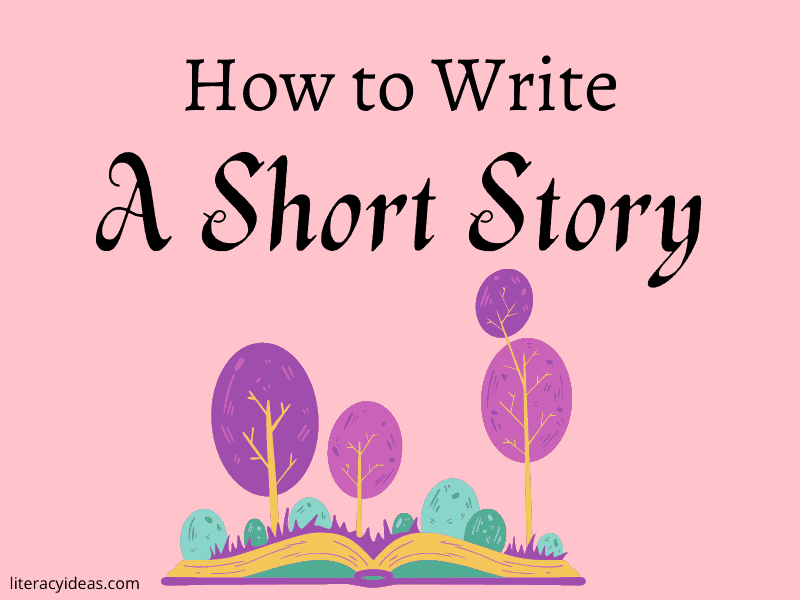
Short Story Writing for Students and Teachers
Your cookie preferences
In order to provide you with the best possible experience on the LifeSkills website we use cookies and similar technology to collect data from your device and browser while you are here. Collecting this data helps us to personalise content for you, understand how you use the website, allow access to social media features and deliver personalised service and advert message content. You can find out more in our Cookie Policy . Please select ‘Accept all’ to consent to us collecting your data in this way. To see other data collection options, select ‘Manage data preferences’.
The types of similar technologies used in this website fall into one of four categories - Strictly Necessary, Performance, Functionality & Profile and Targeting. You can find out more information in our Cookie Policy .
Please indicate the categories you wish to consent to by selecting ‘Manage data preferences’ and using the sliders below and then click “Save preferences” to retain your preferences for future visits. You can change these preferences at any time by clicking Cookie Policy on our website.
Strictly necessary
Data collected in this category is essential to provide our services to you. The data is necessary for the website to operate and to maintain your security and privacy while using the website. Data is not used for marketing purposes or for the purposes covered by the other three categories below. This category can’t be disabled.
Performance
These help us improve the experience for all users of the website. Data collected in this category is to inform us how the website is used, improve how our website works and to help us to identify issues you may have when using our website. This data is not used to target you with online advertising.
Data collected in this category is used to help make our messages more relevant to you. The data is shared with other third parties, such as advertisers and platforms we may use to deliver personalised advertisements and messages. If you don’t wish to consent to this category, it’s important to note that you may still receive generic advertising or service messages, but they will be less relevant to you
Functionality & Profile
Data collected in this category enables the website to remember choices you make. This means a more personalised experience for features of the website that can be customised. It may also be used to provide services you've asked for, such as watching a video or commenting on a blog.
For learners from school through to university and beyond
What stage are you at?
For people like teachers, youth group leaders, mentors, local authorities, charities, job centre staff, and parents or carers
Work with a group or a class
Coach an adult
Tools, tips and activities to help your family
Resources for educators
- Login Sign up for free
Save to a group
Would you like to create a subgroup to help organise your saved items?
- I'm here to help others
- Lesson plans
CV skills lesson one: Writing a successful CV

Time to complete
Download the full lesson plan pack including all related resources
Choose to download one or more individual resources
CV skills lesson one: Lesson plan
CV skills lesson one: Presentation slides
What Makes A Winning CV Interactive Worksheet
Supporting young people to feel confident about entering into the world of work can be key to their employment journey. A useful first step to this is understanding how to demonstrate their skills, interests and experience and creating an impactful CV to showcase them.
The activities on this page allow you to support young people develop a CV, but are also suitable for students who already have a CV; they can use these activities as inspiration to improve it.
Teaching resources:
- CV skills lesson one: Lesson plan and presentation slides - full lesson plan including icebreaker for use with a group of students in the classroom
- What makes a winning CV?: Interactive worksheet – interactive worksheet activity for independent learning whether remote or in class
- Your CV part 1 Online lesson film – interactive film for remote or in class learning
How do these activities help you teach your students about the importance of a well-crafted CV?
They focus on understanding the purpose and function of a CV, including what information it needs to include, and how best to organise that information. The lesson plan builds further on this learning through activities that look at example student CVs and consider different CV layouts.
How can you use these resources to help your students identify the skills and experience they already have?
The activities also help students with identifying the skills and experiences they should include on a CV, while teaching them how to communicate their abilities in a clear, compelling way.
If using the lesson plan, students will take even further steps towards applying for a job by writing a personal statement and learning about the function and importance of cover letters, as well as drafting their first CV using provided templates.
Lesson plan
(60 - 90 minutes)
This curriculum linked lesson plan is designed to help students build an understanding of how to write an impactful CV. They will also consider the types of information they should include based on their transferable skills, interests, and experience. Students will apply this learning and self-reflection to drafting their own CV using a template included in the lesson.
Lesson learning outcomes
By the end of the lesson, students will be able to:
- Explain what a CV is used for and be familiar with two common formats
- Understand that a CV should highlight the skills, personal qualities, qualifications, interests, and experience that a potential employer is looking for
- Create a draft CV
Interactive worksheet
(30 - 35 minutes)
Please note that students below the age of 14 cannot sign up for their own LifeSkills account. Any independent or online tasks must be printed or downloaded/provided as a class for them to complete as they are currently hosted on educator pages.
Students can also use this interactive worksheet to learn what a CV is, as well as what information goes into a great CV. The activities include playing the role of the employer reviewing CVs in ‘Play the Boss’, an interactive tool that shows what they’re learning in a real life context.
The worksheet contains some of the themes from the full lesson, comprised of two activities and is flexible for your use in a variety of ways. You may like to assign this activity:
- As homework following the CV skills one lesson
- For independent study
- For remote learning
- Alongside the below Online lesson film
Online lesson film
(5 minutes)
LifeSkills has partnered with education charities The Talent Foundry and Business in the Community to create Online lesson films that can be watched anywhere.
Whether using in the classroom or assigning as a homework task, students will think about what skills they already have to include on their CV and gain confidence in their ability to write an impactful CV. This film could be used in conjunction with the worksheet or lesson plan.
As a follow up, you could use the Online lesson film Your CV part 2 , which explores fine-tuning to CVs to particular roles and making a CV stand out from the crowd.
Further LifeSkills guidance on how to write a student CV
LifeSkills has even more content that can further support your teaching of CV skills and help your students on their employment journey. Check out links to further resources below.
CV skills lesson: Writing a successful CV one should be followed by CV skills lesson two: Fine-tuning your CV to stand out to employers , which teaches students how to tailor their CV to catch the eye of businesses. You’ll also find worksheets and an online lesson film which will give students a chance to get more CV tips and use our interactive CV Builder . You can also further support job-hunting success through complementary interactive tools like How to write a cracking cover letter , or by spinning the Wheel of strengths and writing an application for one of the jobs it suggests.
Why not include crafting a CV as a focus in your students’ wider curriculum? Refer to our Content guide to find out how this LifeSkills resource can be used in PSHE or English lessons.
Furthermore, if your students would benefit from some help with grammar, visit this BBC Teach animated series designed to get young people to grips with grammatical terms. Or if their punctuation could do with improvement, these short films explore the rules they need to get right.
Curriculum tags
A free account gives you access to all educator content, tools and resources
Already have an account, get started, thank you for liking.
Help us to continue creating relevant content for you by leaving some additional feedback .
Additional feedback
All feedback will be anonymous and will help us to provide more effective content for you and your student.
Thank you for letting us know what you thought of .
Why not try one of these next?

Interview skills lesson
Help students equip themselves with the tools to prepare for interviews, so they can perfect their technique and impress employers.

CV skills lesson two: Fine-tuning your CV to stand out to employers
Learn how to write job applications, CVs and covering letters that work.

Networking skills lesson
Explain the benefits to and different types of networking, top tips and how inclusive behaviour can support networking skills.

- Success Story
- Testimonial
- Helps Me To
- Compatibility
- Get GraderAide
- Trial Confirmation
5 Seriously Fun Ways to Teach the Writing Process
The writing process —that is, the steps of pre-writing, drafting, revising, rewriting, and publishing—can be intimidating for students with limited literary experience. It’s an onslaught of new information, and on top of that, students may find it boring.
According to Read, Write, Think , however, that doesn’t diminish its importance: “Studies show that students who learn the writing process score better on state writing tests than those who receive only specific instruction in the skills assessed on the test. This type of authentic writing produces lifelong learners and allows students to apply their writing skills to all subjects.”
How would you teach the writing process to reluctant learners? Would you believe you can do so almost entirely with fun writing games?
Here are five fun ways to teach the writing process to even the most stubborn students.
#1: Play-Doh Creations
The colorful, squishy goop known as play-doh can be a powerful teaching tool. For this activity, geared towards pre-teens and teenagers, all you’ll need is a mini jar of play-doh and a pencil for each student in your class.
The assignment is simple: Each student needs to mold a functioning pencil holder out of the play-doh. By physical implementing the process of brainstorming, attempting, improving, finalizing, and publicly sharing their designs, you’ll also be imprinting the writing process through kinesthetic exposure.
Reading and Writing Haven has all the details if you want to attempt this activity. As a bonus, your students will all have both new writing skills and new pencil holders at the end.
#2: “Publish” Your Students
If students know their work will be shared, they’re much more motivated to polish their prose to perfection. That’s why Teach Hub advises “publishing” your students, which is one of many fun ways to teach the writing process.
There are multiple ways to “publish” student work. You could print and bind a “book” of your students’ writing. You could publish it in the school newspaper or design one just for your class. If you want to keep it simple, even hanging students’ writing on a bulletin board or in the hallway gives them reason to be proud of their work—and make it the best it can be.
#3: Become a Model
Luckily, becoming a writing model doesn’t necessitate high heels or a catwalk, though it’s still one of the most fun ways to teach the writing process. All you need is a projector and either a blank document or a rough draft.
“By modeling the process of writing you can demystify it in terms of sequence and nuance, and make it artistic and entirely personal–and less mechanical as a result,” Teach Thought says.
As you write or revise, talk through your writing process aloud so that students can follow along and take notes. Teach.com emphasizes the importance of providing multiple examples for each Trialnstrated technique, whether it’s as simple as correct punctuation or as complex as a prolonged metaphor.
Additionally, Teach Thought suggests talking through answers to questions like:
- “What are you thinking as you finish that introduction?
- “Why do you go back and fix some errors while you write, and not others?
- “How do you decide when to go to a new a paragraph?
- “How does the absence or presence of pre-writing impact the drafting?
- “How are you using your own uncertainty to affect a certain tone in your writing?
- “How do you keep an audience in mind as you write–how exactly?
- “As you sketch out your conclusion, how is the introduction and the body impacting its design–i.e., what is the relationship between your introduction, your body, and your conclusion?”
While you’re modeling, encourage students to take notes or fill in a pre-determined worksheet. This will cement the messages they’re learning firsthand into their long-term memory.
By teaching writing to students through Trialnstration instead of structural memorization, you’ll build deeper understanding than you could ever hope for otherwise.
#4: Play a Game
There’s an abundance of fun writing activities to be mined online. Literacy Ideas offers “Story Chains,” which encourages social creativity instead of solo, single-minded struggle.
To play “Story Chains,” write a prompt on the board and give each student 2 minutes to begin a story based on that prompt; then they pass their story along, allowing the next student to continue the story where they left off. The game ends when every student’s original story has traveled back to their desk, now complete with contributions from all of their classmates.
“This activity encourages students to see writing as a communicative and creative task where there needn’t be a ‘right’ answer,” Literacy Ideas says. “This encourages students to be more willing to take on creative risks in their work.”
Thoughtful Learning ’s contribution is equally zany. “ Diary of a Famous Figure ” tasks students with listing three famous people, real or fictional, that they particularly like—then writing a diary entry about a day in that person’s life, from first-person perspective.
Finally, Essay Catcher offers a visual element to writing games with “Photo Story/Memes.” Select intriguing photos from the Internet, and then encourage students to choose a photo and write a story incorporating the image. For a more gentle introduction to visual writing inspiration, download meme templates (or photos that could lend themselves to memes) and ask students to write appropriately creative captions.
#5: Use GraderAide to Make More Time for Activities
If you’re thinking, “These creative writing games sound like a great idea, but how will I find the time to grade everything?” then GraderAide is your solution.
Instead of painstakingly grading every assignment, you can simply upload them to the GraderAide software and receive recommended grades back in minutes. Grades are assigned at grade level based on focus, purpose, content, development, organization, and grammar. Best of all, you can tell GraderAide whether the assignment is informative, narrative, literary, or persuasive, allowing the program to adjust its grading accordingly.
With your schedule freed from grading, you’ll have time to implement these fun ways to teach the writing process. So what are you waiting for?
GraderAide is the most advanced scoring system for written assignments available to teachers. To learn more, visit www.graderaide.com .
- Terms of Service
- Privacy Policy
- Learn About GraderAide
- Immediate Value

COMMENTS
Endlessly editing your students' resumes may help them land a job or two, but it doesn't teach them any lifelong skills. Instead, you should be teaching your students how to write their own resumes in a way that is compelling and effective. Classroom activities can help your students cultivate the skills they ...
This 60-minute lesson plan has everything you need to teach your students resume-writing skills so they can write resumes that grab employers' attention and, most importantly, lead to interviews. It includes materials, learning objectives and standards, activities and instructions, and student handouts. We also recommend tech tools that you ...
02Warm up. 02. Warm up. Get students warmed up and ready to tackle the next activity with a quick Do Now and Debrief, and Framing to help them understand the importance of resume building. Do Now. 5 min. When students enter the classroom or sign into class online, project the slide that asks the following questions.
This self-esteem activity for high school students can work wonders in encouraging students to have belief & faith in themselves and their unique capabilities. 10. Build a Resume from Scratch. Let's solve a puzzle and build a resume from scratch without having relatable skills, qualifications, and experiences to include.
Even though you might not need to update your resume, it's a great exercise that will help you better understand the process and allow your students to see an "expert" model revision. 3. Scaffold the writing process with mini-lessons & a resume outline. Resume outline: Students drafted and revised on a Google doc.
5 Tips for Writing Resumes. 1. Your Name - Big & Bold. First of all, your name is the first item any reviewer is going to see on your CV. Be sure that your name is big and bold! Center or left align your name, but have it yell "me!" when you see the page. Remember, your CV is like a marketing document for one particular product - you!
A.2. Analyze skills and abilities required in a variety of career options and relate them to their own skills and abilities. B.1. Use a career planning process that includes self-assessment, personal development, and a career portfolio as a way to gain initial entry into the workplace. B.2.
As a class, list the problems on a dry-erase board or chart paper. Next, go over Joe's "good" resume. Compare and contrast the two resumes, explaining why Joe's is better and writing these aspects and reasons on the board or chart paper. Students also can suggest improvements Joe could have made. You may want to note that there is no single ...
Using Letter Generator, have students transform their drafts into finished cover letters. Make sure students save their work and also print a copy. At the end of class, ask students to submit their resumes and cover letters to you for a grade. Use the Resume / Cover Letter Rubric to assist you in assigning a grade.
Teach your students that their names need to be the most prominent things on their resumes. When writing a resume, you must always use a larger font size for your name. Ensure that you center or ...
Close the resume examples and maximize the 7.2 Resume Writing Presentation. As you continue through the presentation, point out how the various resume writing strategies below are used in the example resumes that students should be looking at in their Student Manual. Resume Writing Strategies . CONTENT or "How to Write a Resume" • Be concise
In this lesson, students will develop a resume, write business correspondence, complete a sample job application, and explain the protocol for selecting and using appropriate references for job applications. Download the lesson plan. Scroll to the related items section at the bottom of this page for additional resources.
The point is to get students to pursue jobs they really want so they will be motivated to do their best with the assignment. I approach the resume as a two-phase assignment: (1) researching and gathering content, and (2) revising and formatting content. The first phase gets students gathering information about the organization where they want ...
Provide only a series of confusing diagrams illustrating your experience and education. Students must write about your skills and experience using the passive voice. The creative writing CV. Give a few key facts and the recruiter must write a dramatic account of your career to date, inventing details as necessary.
9. Include keywords. Keywords for a teacher's resume are words or phrases that represent essential ideas related to teaching. Including keywords in a resume can help you express your goals, values and experiences quickly and effectively. Keywords can also help suggest an up-to-date knowledge of contemporary teaching values and standards, which ...
You can better understand the perspective of a recruiter by playing the 6-Second Resume Challenge. It shows you a series of resumes for an entry-level customer service role, but gives you just six seconds to make a snap decision about each candidate. Fair warning: The seconds tick down a lot faster than you'd expect—and within that time you ...
2. RELEVANT WRITING. Picture this. Energetic lyrics fill the air as students listen, think critically, and analyze them. Or, students snap a photo of a page from an independent reading book, grinning as they annotate it with gifs, text, emojis, and more. Spotify and Snapchat are extremely popular apps for students.
That's why we asked our friends at Deloitte to share some of their high school resume tips to help students prepare for future career and college opportunities. 1. Customize your resume for each job. You know what they say—you never get a second chance to make a first impression.
7. Comic Strip Script. The Purpose: Give your students the chance to improve their dialogue writing skills and to work on their understanding of character development in this fun activity which combines writing with the use of a series of visual elements. The Process: There are two ways to do this activity.
Lesson plan. (60 - 90 minutes) This curriculum linked lesson plan is designed to help students build an understanding of how to write an impactful CV. They will also consider the types of information they should include based on their transferable skills, interests, and experience. Students will apply this learning and self-reflection to ...
Here are five fun ways to teach the writing process to even the most stubborn students. #1: Play-Doh Creations. The colorful, squishy goop known as play-doh can be a powerful teaching tool. For this activity, geared towards pre-teens and teenagers, all you'll need is a mini jar of play-doh and a pencil for each student in your class. ...
Fun Persuasive Writing Mini Lesson Ideas. Analyzing advertising, creating ads, and debates are fun parts of teaching persuasive writing. Students quickly become engaged in learning about persuasive writing because it brings writing to life in a new way. Persuasive writing sparks creativity and interest from students in a way that the other ...
How it Works. Create a scavenger hunt with clues that involve finding examples of punctuation in texts, posters, or books around the classroom. This activity can be done with other grammar rules and parts of speech. 4. Storytelling with Grammar.